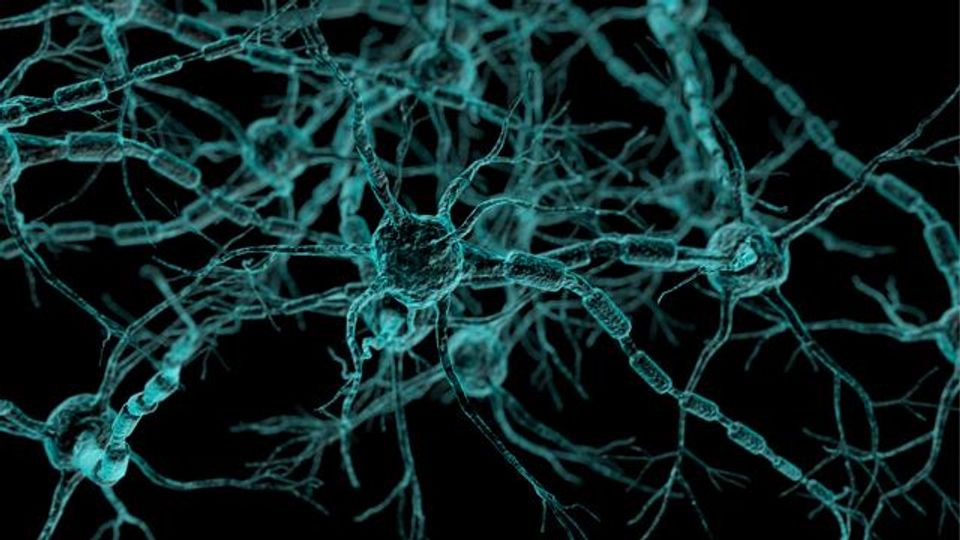Two Neurodegenerative Disorders Share a Common Molecular Pathway

Complete the form below to unlock access to ALL audio articles.
Researchers from two independent research teams have discovered how the mislocalization of a protein, known as TDP-43, alters the genetic instructions for UNC13A, providing a possible therapeutic target that could also have implications in treating amyotrophic lateral sclerosis (ALS), frontotemporal dementia (FTD), and other forms of dementia. ALS and FTD are two neurodegenerative disorders in which many cases are linked by mislocalization of TDP-43, where instead of being primarily located in the nucleus of the cell where genes are activated, it forms aggregates outside the nucleus in multiple neurodegenerative diseases. Rare mutations in the TDP-43 gene are known to cause ALS, but almost all cases of ALS show mislocalization of TDP-43. The studies were published in Nature.
“ALS and FTD patients have long participated in genetic studies looking for changes in genes that might contribute to risk for disease,” said Thomas Cheever, Ph.D., program director at the National Institute of Neurological Disorders and Stroke (NINDS). “Here, we see two independent research teams converging to explain how one of these changes can be a critical factor contributing to an entire class of neurodegenerative diseases, as well as a potential therapeutic target.”
One study, which is a collaboration between the labs of Michael Ward, M.D., Ph.D., scientist at the National Institutes of Health’s NINDS, and Pietro Fratta, Ph.D., professor at the University College London Queen Square Motor Neuron Disease Centre in the United Kingdom, initially looked at lab-grown neurons derived from human induced pluripotent stem cells (iPSCs)—stem cells created from a patient’s tissue sample, often skin or blood. Using powerful genetic tools, the researchers created neurons that made much less TDP-43 protein than normal, and this resulted in the appearance of abnormal mRNA sequences inserted into the instructions used to make several other proteins. These abnormally inserted sequences, called cryptic exons, can result in a defective protein or can even prevent the protein from being made at all.
The UNC13A gene is important for maintaining the connections between neurons and has been shown to be a risk factor for both ALS and FTD. UNC13A is also one of the mRNA sequences that contained cryptic exons when TDP-43 was reduced, and cryptic exons were also seen in neurons taken from postmortem tissue of ALS and FTD patients. These findings directly link a well-established risk factor for ALS and FTD with the loss of TDP-43.
“We have built on years of genetic research that identified that UNC13A was implicated in motor neuron disease and FTD and supported it with a new molecular biology finding that confirms that the gene is absolutely fundamental to the disease process,” said Dr. Ward.
At the same time, Aaron Gitler, Ph.D., professor at Stanford University in Stanford, California, and his lab, along with a team led by Len Petrucelli, Ph.D., professor at Mayo Clinic in Jacksonville, Florida, were also looking at the effects caused by a loss of TDP-43 as they pertained to FTD and ALS. They first analyzed existing datasets in which postmortem neurons from patients with FTD or ALS were sorted based on whether their nucleus contained TDP-43. When genes were compared between neurons with and without TDP-43, UNC13A again emerged as one that was significantly affected by TDP-43 loss. Knocking down TDP-43 in otherwise healthy cells also introduced cryptic exons into the UNC13A gene, suggesting that this is a direct effect on the gene itself. They also show that the genetic code differences in the variants of UNC13A that are associated with FTD and ALS occur where the cryptic exon is located. It is known that mislocalization of TDP-43 similarly causes cryptic exon splicing into another gene that encodes the protein stathmin 2, which is depleted in the motor neuron and implicated in neurodegeneration. Both studies suggest that developing means to increase the levels of UNC13A or stathmin 2 may be effective in preventing the death of neurons in these tragic disorders.
TDP-43 mislocalization is seen in other degenerative diseases, including Alzheimer’s disease, chronic traumatic encephalopathy (CTE), limbic predominant, age-related TDP-43 encephalopathy (LATE), and inclusion body myopathy, suggesting that these findings could be extended to those conditions as well.
References:
Brown A-L, Wilkins OG, Keuss MJ, et al. TDP-43 loss and ALS-risk SNPs drive mis-splicing and depletion of UNC13A. Nature. 2022. doi: 10.1038/s41586-022-04436-3
Ma XR, Prudencio M, Koike Y, et al. TDP represses cryptic exon inclusion in the FTD-ALS gene UNC13A. Nature. 2022. doi: 10.1038/s41586-022-04424-7
This article has been republished from the following materials. Note: material may have been edited for length and content. For further information, please contact the cited source.

